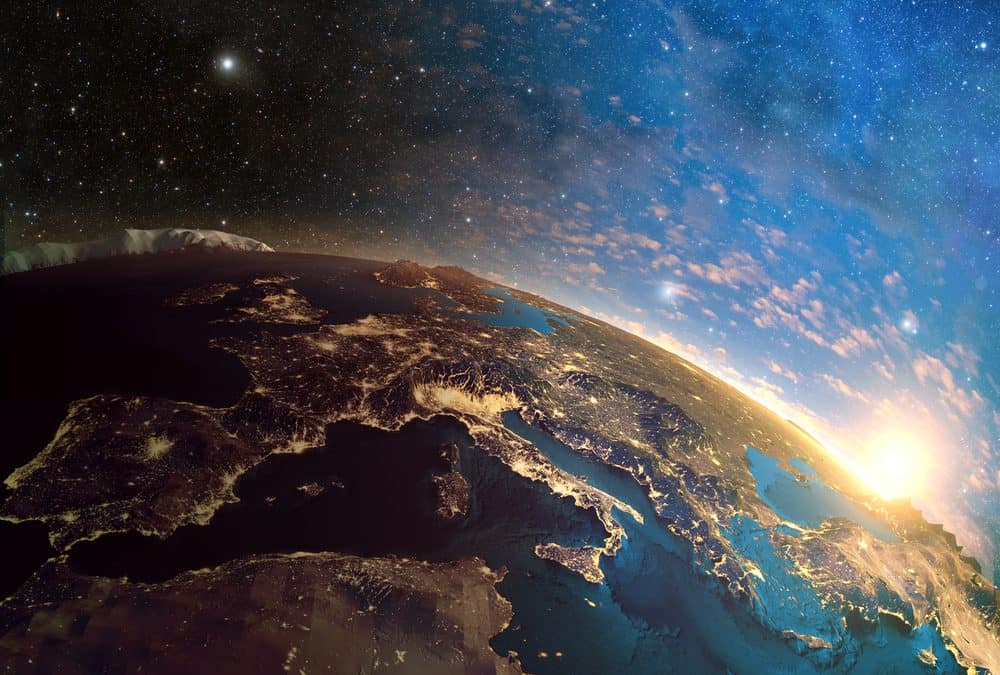Another trivia list! This list explores a variety of fascinating scientific facts that you might not be unaware of. Science, technology, engineering, art and mathematics are very fascinating subjects, so there are millions of trivial facts about it – the list could be infinite. But, just for fun, here are the top seven amazing science facts we came across this week.
1. There is enough DNA in an average person’s body to stretch from the sun to Pluto and back — 17 times.
According to zmescience.com, “the human genome, the genetic code in each human cell, contains 23 DNA molecules each containing from 500 thousand to 2.5 million nucleotide pairs. DNA molecules of this size are 1.7 to 8.5 cm long when uncoiled, or about 5 cm on average. There are about 37 trillion cells in the human body and if you’d uncoil all of the DNA encased in each cell and put them end to end, then these would sum to a total length of 2×1014 meters or enough for 17 Pluto roundtrips (1.2×1013 meters/Pluto roundtrip).”
2. There are 8 times as many atoms in a teaspoonful of water as there are teaspoonfuls of water in the Atlantic ocean.
Tibi Puiu reports that “a teaspoon of water (about 5 mL) contains 2×1023 water molecules, but each water molecule is comprised of 3 atoms: two hydrogen and one oxygen. Moreover, if you’d laid down end to end each water molecule from a teaspoon full you’d end up with a length of 50 billion km or 10 times the width of our solar system.”
3. The Eiffel Tower can be 15 cm taller during the summer.
 How it Works shares “when a substance is heated up, its particles move more and it takes up a larger volume – this is known as thermal expansion. Conversely, a drop in temperature causes it to contract again. The mercury level inside a thermometer, for example, rises and falls as the mercury’s volume changes with the ambient temperature. This effect is most dramatic in gases but occurs in liquids and solids such as iron too. For this reason large structures such as bridges are built with expansion joints which allow them some leeway to expand and contract without causing any damage.”
How it Works shares “when a substance is heated up, its particles move more and it takes up a larger volume – this is known as thermal expansion. Conversely, a drop in temperature causes it to contract again. The mercury level inside a thermometer, for example, rises and falls as the mercury’s volume changes with the ambient temperature. This effect is most dramatic in gases but occurs in liquids and solids such as iron too. For this reason large structures such as bridges are built with expansion joints which allow them some leeway to expand and contract without causing any damage.”
4. A teaspoonful of neutron star would weigh 6 billion tons.
The team at How it Works reports “a neutron star is the remnants of a massive star that has run out of fuel. The dying star explodes in a supernova while its core collapses in on itself due to gravity, forming a super-dense neutron star. Astronomers measure the mind-bogglingly large masses of stars or galaxies in solar masses, with one solar mass equal to the Sun’s mass (that is, 2 x 1030 kilograms/4.4 x 1030 pounds). Typical neutron stars have a mass of up to three solar masses, which is crammed into a sphere with a radius of approximately ten kilometers (6.2 miles) – resulting in some of the densest matter in the known universe.”
5. If you drilled a tunnel straight through the Earth and jumped in, it would take you exactly 42 minutes and 12 seconds to get to the other side.
According to space.com, “the mean radius of Earth is 3,959 miles (6,371 kilometers). However, Earth is not quite a sphere. The planet’s rotation causes it to bulge at the equator. Earth’s equatorial diameter is 7,926 miles (12,756 km), but from pole to pole, the diameter is 7,898 miles (12,714 km) — a difference of only 28 miles (42 km). The circumference of Earth at the equator is about 24,874 miles (40,030 km), but from pole-to-pole — the meridional circumference — Earth is only 24,860 miles (40,008 km) around. This shape, caused by the flattening at the poles, is called an oblate spheroid.”
6. If the 5 trillion spiders in Netherlands took to eating humans rather than insects, they’d consume all 16.7 million Dutch people just in three days.
Gizmodo.com wrote, “the world’s estimated 25 million metric tons of spiders eat between 300 and 800 million metric tons of  food per year, according to estimates published today in the very silly-sounding journal The Science of Nature. (That almost feels like calling something the Ferrari of Lamborghinis in academic journal speak). That food consists mainly of insects, little non-insect bugs called springtails, and even small vertebrates. The researchers make several assessments, using the amount of food individual spiders need to eat, the number of insects they catch in their webs, and the number of insects they kill on the hunt.”
food per year, according to estimates published today in the very silly-sounding journal The Science of Nature. (That almost feels like calling something the Ferrari of Lamborghinis in academic journal speak). That food consists mainly of insects, little non-insect bugs called springtails, and even small vertebrates. The researchers make several assessments, using the amount of food individual spiders need to eat, the number of insects they catch in their webs, and the number of insects they kill on the hunt.”
7. On an average work day, a typist’s fingers travel 12. 6 miles.
According to ratatype.com, “The highest typing speed ever recorded was 216 words per minute (wpm), set by Stella Pajunas in 1946, using an IBM electric typewriter. Currently, the fastest English language typist is Barbara Blackburn, who reached a peak typing speed of 212 wpm during a test in 2005, using a Dvorak simplified keyboard. The average wpm speed is only 41.4 words in one minute. This is far below the speeds of the record holders, or even the speeds that are needed to be successful in the working world. However, it is considered a good typing speed.
Have a few cool STEAM trivia facts to add? Comment below!
And then some,
Your friends @ OBP


Recent Comments